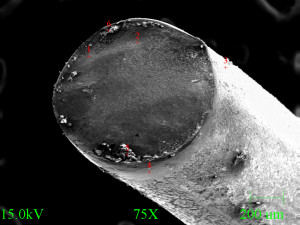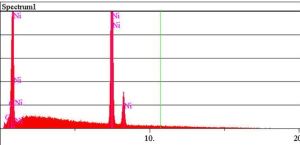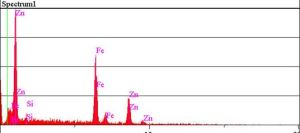RoHS Compliance on Plated Steel Parts
Gideon Analytical Laboratories received several plated steel parts, including coupons, hinges, and shoulder nuts. The goal was to determine if these parts were RoHS compliant. RoHS is short for Directive on the restriction of the use of certain hazardous substances in electrical and electronic equipment; it was initially created by the European Union in February of 2003. To be RoHS compliant, devices have to be free from the following hazardous substances: Lead, Cadmium, Mercury, Hexavalent chromium, Polybrominated biphenyls, and Polybrominated diphenyl ether. There are a number of electronics components that potentially could contain these restricted substances like solders printed circuit boards, lamps and bulbs, batteries, and metal parts. Closely linked to RoHS is the Waste Electrical and Electronic Equipment Directive (WEEE).
The plated steel part analysis was conducted using SEM-EDS, which yields an elemental analysis in relation to the intensity of the element at a specific wavelength or energy level. In order to be RoHS compliant as directed by the EU, levels of the hazardous substances have to have less than a specific parts per million (ppm). For Lead (Pb) < 1000 ppm, for Mercury (Hg) < 100 ppm, for Cadmium (Cd) <100 ppm, for Hexavalent Chromium (Cr VI) < 1000 ppm, for Polybrominated Biphenyls (PBB) < 1000 ppm, and for Polybrominated Diphenyl Ethers (PBDE) < 1000 ppm. Gideon Analytical Laboratories ran SEM-EDS-XRF scans on all of the plated steel parts. No restricted elements were present in any of the parts; they were all RoHS compliant.
Gideon Analytical Laboratories has modern, state of the art scientific analytical equipment to ensure all types of electrical components are RoHS or WEEE compliant. If you need to examine electrical devices to determine their elemental makeup, contact Gideon Analytical Laboratories. We offer a wide range of analytical services that can help companies in the electronics industry in design, production, or application.

Micrograph of spring

Spectrum of hinge

Spectrum of shoulder nut

Spectrum of steel coupon